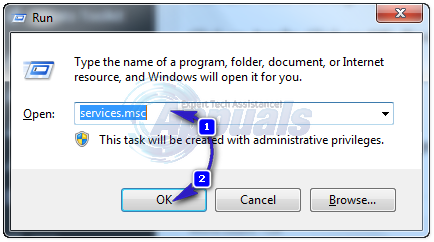All You Need to Know About the Werfault.exe Process
Werfault.exe is a process related to the Windows Error Reporting Service—a built-in Windows feature that allows users to send information about errors and issues on their computer directly to Microsoft. In exchange, the service may provide information about possible solutions. This tool is part of nearly every version of Windows and can help troubleshoot and solve problems that affect your system.

In most cases, Werfault.exe starts hogging the CPU due to either a malfunction within the process itself or because another program is constantly generating errors. When a program on your computer keeps having issues, Werfault.exe may end up using up all your CPU trying to handle the endless stream of error reports.
Thankfully, no matter what’s causing Werfault.exe to use all of your CPU, there are a few effective ways to fix the problem. The two main solutions are:
- Disabling the Windows Error Reporting Service completely.
- Finding and removing the program that’s causing Werfault.exe to overwork.
Disabling the service means you won’t receive error reports, which can be useful for troubleshooting. However, tracking down the offending program is often a better, if slightly more time-consuming, solution. The right choice depends on your personal needs.
1. Clean Boot Your System
Clean booting is an effective way to eliminate unnecessary errors and boost your system’s performance because it disables startup programs and services not related to Windows.
Follow the steps to clean boot your computer (here).
Afterward, reboot your system and check if the issue persists. If it does, move on to Method 2.
2. Run System File Checker Scan
Corrupted system files can stop user accounts from showing up at login. This scan finds and fixes those files to help your computer work normally again.
You can follow the steps to run a System File Checker (SFC) scan here.
3. Disable the Windows Error Reporting Service
Sometimes, background error handlers can cause problems with the login process—Windows Error Reporting is one example. Turning off this service can help avoid issues or slowdowns when loading your user profile because it stops error reports from running during startup.
1. Hold the Windows Key and Press R. In the Run dialog, type services.msc.

2. Scroll through the list of services and find Windows Error Reporting Service. Double-click it.
3. Click on Stop to halt the service.
4. Open the dropdown menu next to Startup type and select Disabled.
5. Click Apply, then OK.
6. Restart your computer.

Disabling Error Reporting will stop those error notices from appearing, but this is not recommended unless you are sure you do not want to receive any error reports. I suggest proceeding with Method 4 to identify what is actually causing the errors. However, if you’re comfortable with disabling it, you may skip the next step.
4. Find the Program Responsible for Werfault.exe Malfunctioning and Remove It
Some background apps can quietly interfere with Werfault.exe, causing errors without clear warning signs. Finding and removing the app that’s causing this problem can stop the crashes and help error reporting work normally again.
1. Open the Start Menu and search for eventvwr.msc, then open the program that appears.
2. Under Summary of administrative events, expand the Errors section by double-clicking it.
3. Look for the source or application that is responsible for most of the errors reported in the Event Viewer (especially around the time the problem occurred) and double-click to view more details.
4. Click on a few of the top errors and check the Faulting application name field in the window below. The application that appears most often is likely the culprit.
5. Identify which program or application this is. You can either search online or browse your installed programs to find it.
6. Uninstall and remove the program responsible.